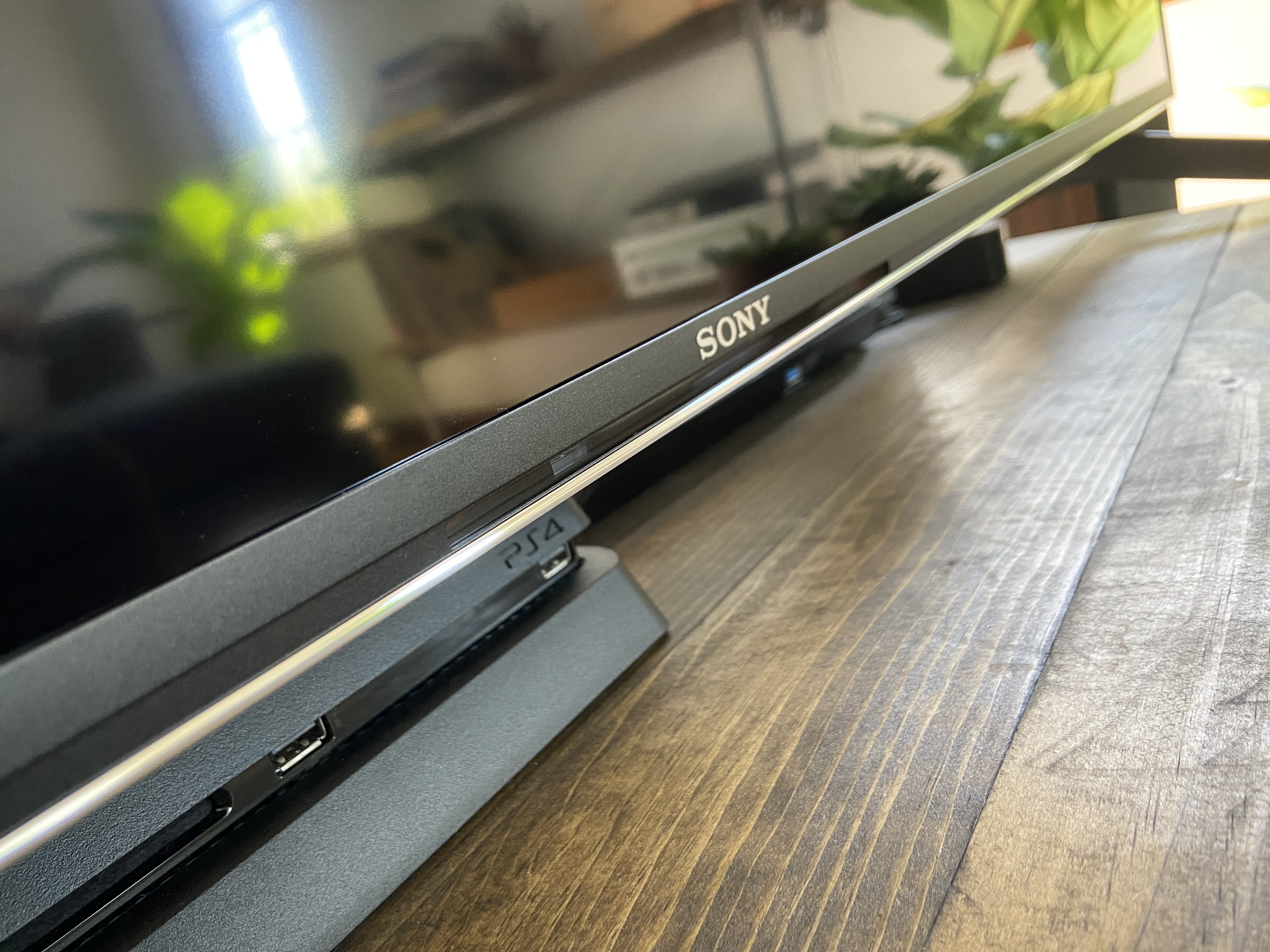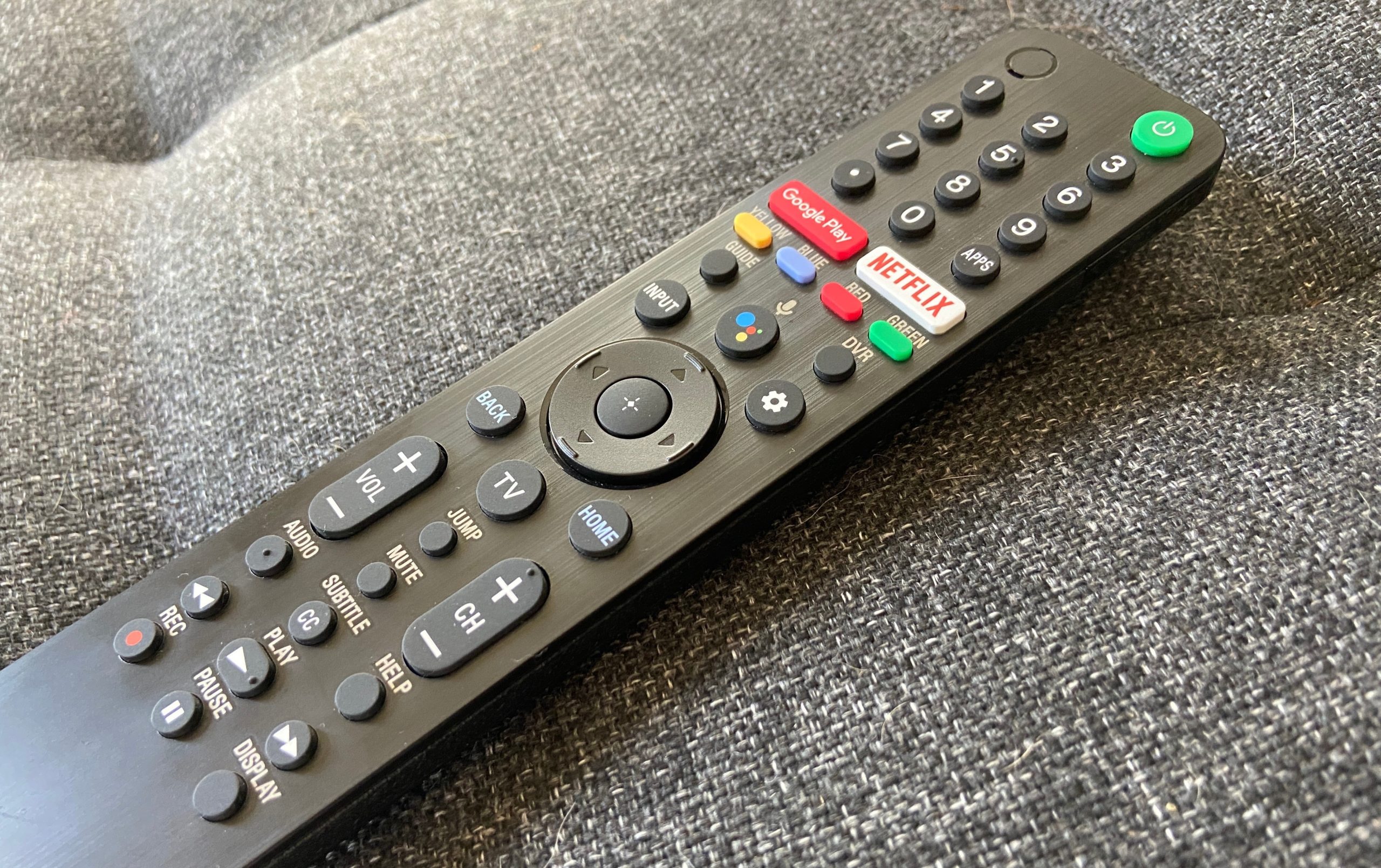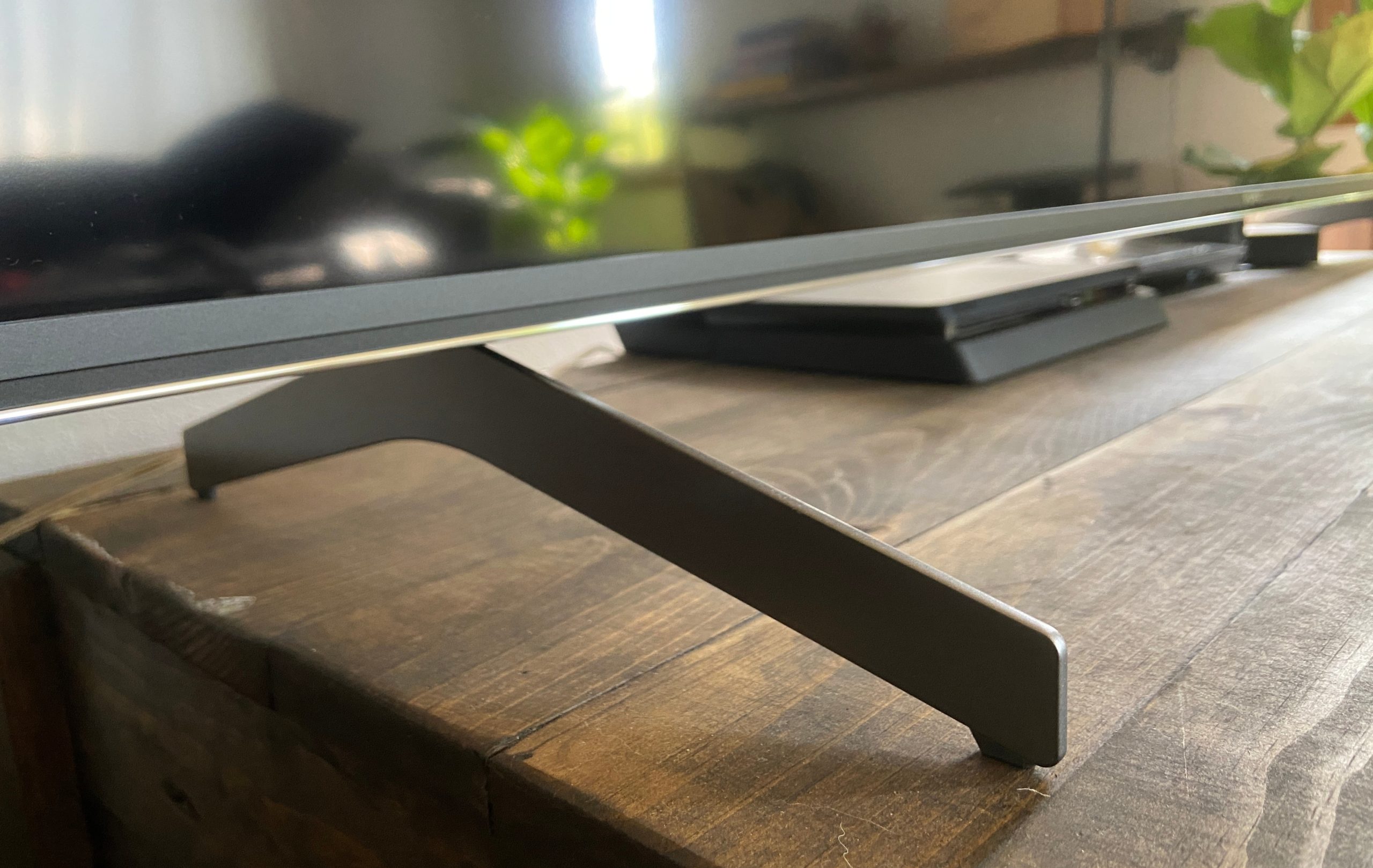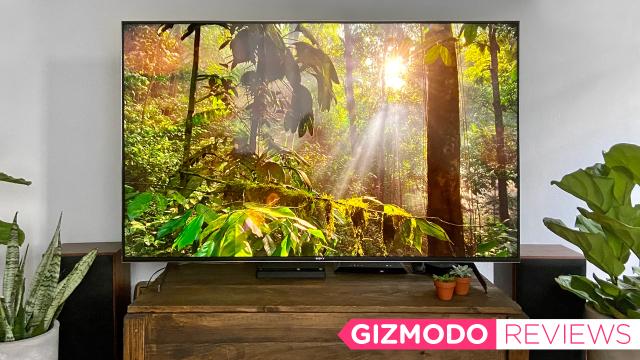The number of beautiful, non-OLED, so-called “future-proof” TVs available on the market for less than $US1,500 ($2,082) is relatively small. And if you plan to buy one of either of the hotly anticipated gaming consoles expected to drop around the holidays, a TV with HDMI 2.1 support is likely high on your list of priorities if you plan to take advantage of those consoles’ most technical promises. It certainly was on mine as I moved from a more projector-friendly setup to one that necessitated an actual TV. And after spending weeks with Sony’s X900H, I’m convinced that this will be the TV for me — with, of course, some pretty big caveats.
The X900H 4K HDR full array LED was announced at CES this year as one of a handful of new televisions in Sony’s 2020 lineup. It’s also, notably, one of its more affordable units, though the X900H is still significantly more expensive than some of your other options with similar features — we’ll get to that in a bit. The 55-inch version of this TV starts at $US1,000 ($1,388) and climbs up to $US2,800 ($3,887) for the 85-inch model. At its highest price, it’s probably seriously worth asking yourself if you’d rather invest in an OLED. But after reviewing the 65-inch model, which retails for $US1,400 ($1,944), this TV makes a pretty solid case for itself if gaming and actual usability are as important to you as they are to me.

Sony X900H
What is it?
A 65-inch 4K HDR full-array LED TV that runs on Android TV.
Price
$US1,400 ($1,944)
Like
A beautiful, user-friendly, super-smart TV with gorgeous picture and later HDMI 2.1 support.
Dislike
Sony has not actually introduced the gaming features to this TV yet that make it truly worth the money.
Let’s start by addressing the big elephant in the room and the biggest problem with this TV at the time of this writing: HDMI 2.1 support. If you plan to take full advantage of the visual goodies offered by the next-generation Xbox Series X and the Playstation 5 consoles, for example, you’re going to want a TV with HDMI 2.1 ports to support 4K gameplay at 120Hz. The X900H is marketed as one of Sony’s “Ready for PlayStation 5” units, the other being the Z8H 8K HDR Full Array LED (which starts at $US6,000 ($8,330) and will not support all HDMI 2.1 features). And while Sony confirmed to Gizmodo that the X900H will support eARC, Auto Low Latency Mode (ALLM), Variable Refresh Rates (VRR), and 4K120, not all of these features are yet available. Sony said the features are coming with a firmware update, but the company still won’t comment on when that’s going to happen.
Because we don’t know what the timeline is for that, I would caution those for whom this is a make-or-break priority to wait (or perhaps consider a 2020 Vizio model that comes standard with these features and will be reviewed here soon). Personally, I’m perfectly fine with waiting — if I’m being totally honest, I’ve still yet to play through a number of PS4 games — if it means Sony will roll out support eventually. In the meantime, the TV offers plenty of perks with its voice-powered Google Assistant remote, built-in Chromecast, as well as support for Apple AirPlay, HomeKit, and Amazon Alexa-enabled devices.
Here’s why I was personally wooed by this Sony over, say, a Vizio P-Series Quantum X ($US1,500 ($2,082)) or any other TV maker who claimed it’d support the HDMI 2.1 standard in its newer models: I really, really like Sony’s Android interface and the design of the physical unit. First of all, Android TV has been far easier for me to navigate than any Roku setup. It’s also a lot cleaner than Roku or custom operating systems like Tizen or WebOS. This is a matter of personal preference, of course. But I really like how natural the system is, how it works with accounts I already have, and how attractive it is. I found myself deferring to the X900H’s navigation menu even over my Apple TV a lot of the time.
Anything forthcoming from TCL, the other notable maker of Android TVs, would have been highly enticing and probably significantly less expensive, but I just cannot justify waiting for the company to start introducing Android TV to more units available in the U.S. — if it ever does. (It’s currently offered only on the 3-Series.) I’ll admit, this is very much a personal preference — and you might actually like other OSes more, but I really love Android TV. I also really do hate the experience of Roku that much, particularly since Roku lacks support for so many apps.

Obviously, one option for getting around the OS issue is to just to buy a set-top box like an Apple TV, as my colleague Victoria Song has my previous projector setup. A TV, for me, is a long-haul investment and I want one that will grow up with me and the wide array of standards TVs deal with.
That brings us to the picture. Sony likes to point out it’s a company that not only makes TVs but the equipment and content displayed on them, putting it in a unique position to think about the way we see our entertainment. One of the more gimmicky ways Sony backs up this claim is with its Netflix Calibrated picture mode — a setting unique to the on-unit Netflix app (meaning you won’t find it in the Netflix app on your Apple TV or Roku boxes). Sony claims that this setting allows you to “experience picture quality close to a filmmaker’s vision and intent,” which sounds pretty neat on paper. What cinephile doesn’t want to watch a film as it was meant to be seen with absolutely minimal calibration efforts?
It’s not perfect — especially if your TV isn’t in a dark pit as most cinephile calibration presets expect it to be. Toying around with its out-of-the-box display settings while watching Netflix’s Lost in Space, I found that the preset Cinema mode was the one that tended to offer the best picture for me across dynamic scenes. It also appeared that more detail came through with the Cinema setting than with Netflix Calibrated — blacks and shadows seemed to suffer here more than anything else. I thought a lot of finer detail was lost in translation, and some scenes just simply looked too dark for my own comfort. I get it. This is what Hollywood wants me to see! But I have huge windows and no blackout curtains yet! (Soon. I swear.)
Watching a baseball game in Dolby Vision Bright was an absolute joy. (Watching a Giants game in the TV’s Vivid mode nearly blinded me. Avoid Vivid.). A Sony spokesperson told Gizmodo that as with Netflix Calibrated, which used the fancy OLED BVM-300 monitor as a reference point, its Custom mode was designed as part of a partnership with Sony Pictures Entertainment to be better tuned for a great experience without paying for a calibrator. But I wasn’t a huge fan. Cinema Mode, meanwhile, turns on or up its Advanced Contrast Enhancer, Live Colour, and MotionFlow features and it produces a great picture for viewing in a home entertainment setting. I settled on Cinema mode for the most part, as it was the closest to accurate on most apps and programs, and once the TV was calibrated I was impressed with the picture.
I’d never seen Interstellar’s rich, natural palette pop quite like it did on this TV, and I have watched this movie many times on many, many screens both big and small. Sadly, reader, I can’t report that Sony’s beautiful screen miraculously fixed Christopher Nolan’s shitty sound in this film, though.

I did not notice a ton of blooming or haloing with this TV, particularly in those starry, pitch-black space environments. It’s not as good as an OLED, but I thought it handled these deep-black scenarios exceptionally well — and for $US400 ($555) to $US500 ($694) less than a similarly spec’d OLED. Sony doesn’t comment on how many zones of local dimming it uses, only that it supports the technology — something I find incredibly odd since everyone else generally touts it as a tentpole feature. It’s also tight-lipped about peak brightness. It did, however, say the TV’s panel has an actual refresh rate of 120Hz.
This TV looks gorgeous sitting in your living room, with minimalist stands that slip directly into the unit (no screws required) as well as narrow bezels and an aluminium frame. Sony’s unit comes with a decent four HDMI side-oriented outputs, though it’s not clear how many of those will support the future HDMI 2.1 standard that’s coming down the pipeline. If it’s one, you may only be able to use a single next-generation console at a time, something that could be a major pain in the arse for serious gamers.
This TV’s sound system is well enough on its own. Its built-in speakers aren’t bad, and Sony makes a big deal about the down-firing speakers and two tweeters on either side of the unit, which are meant to make sound from the unit feel immersive. To a certain degree, they did. But most like most LEDs and OLEDs, it can be improved upon with a decent soundbar simply because their on-unit speaker systems are so limited by the thinness of the screen.
If you’re a cinephile who wants the absolute best, closest-to-perfect picture from your TV, again, this might not be the TV for you. (You might instead consider investing in an OLED, though you likely lose HDMI 2.1 support depending on your budget.) And it’s worth repeating that this is a TV that leans heavily into promises for gaming support it has yet to actually deliver on. That said, I do think that the $US1,400 ($1,944) X900H is a freaking fantastic TV with an excellent picture, outstanding interface and customisation capabilities, and one of your better options currently available — at least at this price point. I really did love its Android TV interface, which was both super easy to navigate and did not give me any lag problems. Sometimes you just want something that will have your back in the future and be a joy to use in the present, and that was good enough for me.
README
- Sony’s X900H TV has gorgeous contrast, colour, and control.
- The X900H runs on Android TV and has a pleasantly snappy interface with a lot of customisation tools as well as a Google Assistant-enabled remote.
- This TV is the only one in Sony’s 2020 lineup that will, eventually, support the HMDI 2.1 standard — making this the TV of choice for next-gen gamers.
- However, many of those features aren’t yet available, and Sony frustratingly won’t spill the beans on when that’s going to happen.
Editor’s Note: Release dates within this article are based in the U.S., but will be updated with local Australian dates as soon as we know more.
